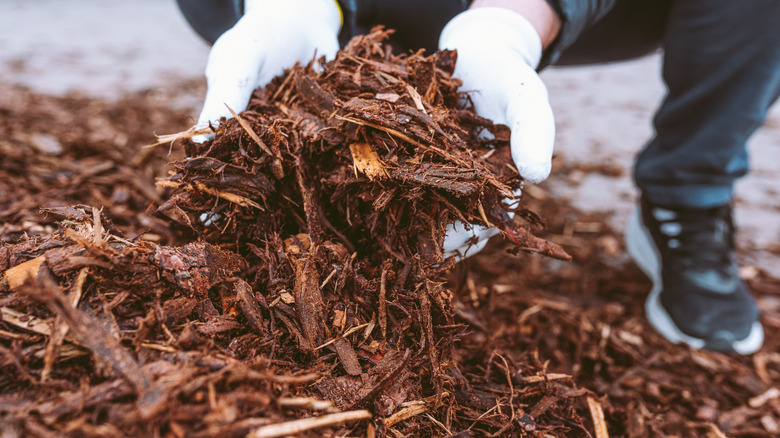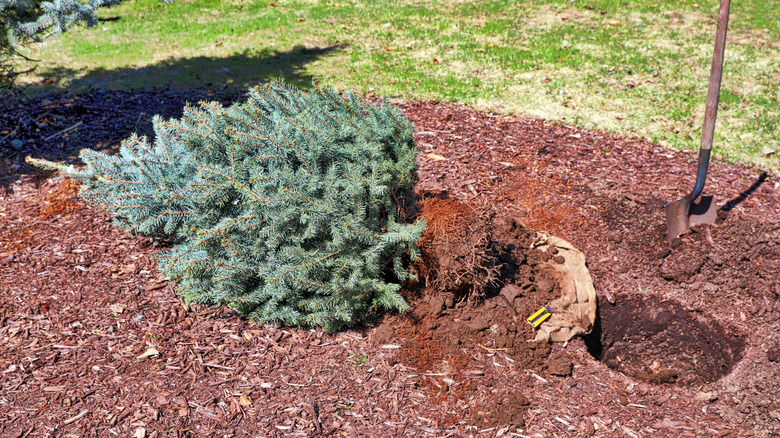The Easy Way To Avoid Damaging Plants When Mulching Your Garden
Picture this: You've just prepared a brand new garden bed that you want to plant out with some new shrubs or perennials. You've done all the hard work of preparing the soil and adding lots of lovely organic matter to get your plants off to a good start. Now, on one side, you have your collection of young plants and, on the other, a nice pile of mulch to add on top of the soil. But which do you add first to prevent damaging your plants? You might be familiar with how to use a plant pot to protect your plants from mulch damage, which means you'll put the plants in before adding the mulch. While this can work exceptionally well if the plants are quite small and easily covered with the pots, an easier method will protect larger plants — spreading the mulch before planting.
The benefit of applying the mulch first is that you can just dump it on in piles and spread it out with a rake or throw it onto the bed from around the perimeter and then level it out. You'll probably find that doing it this way is going to be much quicker and easier. Then, after the mulch has been applied, you can simply pull it back and dig your planting holes before inserting your plants. Remember to keep the mulch at least 2 to 3 inches away from the plant stems.
Why mulching first can be a good idea
Adding mulch before planting can save you from having to trample over the freshly prepared soil too much, which may result in some compaction. This is particularly important if you've watered the bed before adding the mulch, which is something you should do, as it will then hold in the moisture. It also stops you from accidentally getting mulch onto or too close to the young plants, especially those that are too large to protect with plant pots.
Another thing you can do is incorporate the plant pot tip but in a different fashion. This is just one creative way to repurpose plastic nursery pots in your garden. If you happen to have some pots in your garage or garden shed that are a couple of sizes larger than the potted plants, you can use these to mark out the planting positions before adding the mulch. Just wiggle them into the soil and let them in place while you spread the mulch. Then, remove them one by one as you put your plants into the spaces protected by the pots. This will save you from having to pull back the mulch to create your planting holes. It also prevents the chips from mixing into the soil, which can be a big problem when using wood chips, as this can cause a nitrogen deficiency.

